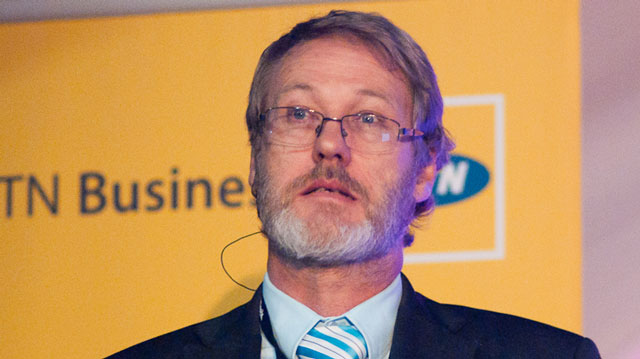
Communications regulator Icasa is considering ways of opening up extremely high frequency (EHF) radio spectrum bands above 30GHz, one of its councillors, William Stucke, said at the Future Wireless Technology Forum on Thursday.
The forum was organised by the Wireless Access Providers’ Association (Wapa), an industry body, to discuss ways South Africa can take advantage of EHF spectrum, which is often referred to as the e-band or the millimetre-wave band in reference to the size of wavelengths at these frequencies.
Stucke said Icasa needs to develop a position on how EHF spectrum should be licensed (or otherwise) and, if it is licensed, what sort of spectrum fees it should attract. Speakers at Thursday’s event mostly expressed a desire for either an unlicensed approach, or one where licence fees are very low in keeping with regulations applied in Europe, North America and elsewhere.
Although Icasa regulates all spectrum between 9kHz and 1THz, Stucke explained that the authority has not really attempted to tackle anything above 30GHz until now.
“Icasa only has a spectrum licensing framework that goes up to 30GHz. We don’t know how to regulate spectrum above 30GHz,” he said.
Stucke said the first challenge is that the current spectrum fee regime doesn’t make sense above 30GHz as it will prove prohibitively expensive. He explained that the issue is resolvable and Icasa intends addressing it so that the industry can take advantage of EHF spectrum.
Icasa, he said, must still determine which licensing models are most appropriate – whether the frequency should be licence-exempt or licensed in some way. He said the conventional licensing model for spectrum is well understood, but is slow, cumbersome and expensive. The licence-exempt model tends to work quite well for Wi-Fi, but only for personal hotspots, he said. “It’s not always as good for commercial uses as there is no provision for protection [from interference].”
Because of its properties, EHF spectrum is most likely to be used for short-distance, high-capacity, point-to-point links – providing “very fast throughput using relatively small antennas with very high gain”, according to Wapa executive committee associate and spectrum expert Jens Langenhorst. One application, Langenhorst said, would be for providing high-speed backhaul between small cellular sites (so-called picocells).
However, EHF spectrum has a number of problems, including the fact that it is only really suitable for short-distance communications (typically 2km or less) and the fact that it is highly susceptible to so-called “rain fade”. Also, specifically around 60GHz, oxygen in the atmosphere “absorbs” radio signals and causes significant attenuation.
“In the past it was considered unusable spectrum, but you can do a hotspot and get a gigabit per second of capacity over it over a relatively short distance,” he said. “60GHz is not usable much beyond 2km and is the one place in EHF spectrum where attenuation is at its worst.”
Heavy rain also causes problems, Langenhorst said. However, Simon Yomtov, country MD of networking specialist Ceragon, said South Africa is “an almost perfect place to deploy e-band”. This is because rainfall is fairly low in general.
Wietz Joubert, co-founder of Redline Technologies, proposed a different solution. He said so-called “optical wireless broadband” (OWB) technology, which uses optical laser beams to transmit data at high speeds in the 300THz and 400THz bands, could be used in conjunction with EHF equipment to provide high-speed short-haul links.
OBW offers speeds of 2Gbit/s, with 10Gbit/s technology in development, Wietz said. The technology is best used over distances of 2km or less. There is less attenuation due to rain than with EHF systems. However, OWB doesn’t work well in foggy conditions.
“OWB and [millimetre wave] technology together can provide robust gigabit links,” he said. “We’ve seen 1,5km-long OWB links in very heavy storms not going down at all.” — © 2014 NewsCentral Media

